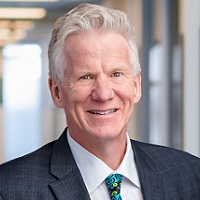 By Nick van Terheyden aka Dr Nick, Principal, ECG Management Consulting
By Nick van Terheyden aka Dr Nick, Principal, ECG Management Consulting
Twitter: @drnic1
Host of Healthcare Upside Down – #HCupsidedown
I’m not a gambler at heart, but my first visit to Las Vegas was a memorable one. It was on one of my first trips to the US with some good friends, and we knew little about Sin City outside of what we’d seen on TV.
Making any bet on a game of chance was a struggle for me personally, but together with my three companions, we had a successful run at the roulette table, walking away with a whopping $32 (split four ways). That was the beginning and end of my betting career; I was content to leave Vegas firmly in the “winner” column.
I may not have gambled money since then, but in many respects, each day is a gamble, and we weigh odds every time we make a decision. Everything has risks. And based on an excellent book by Maria Konnikova, “The Biggest Bluff,” our best bet is to learn how to make good bets. This is true in healthcare.
Episode NOW on Demand
I am sure many healthcare leaders feel like they’re constantly gambling as they navigate the long list of variables, evolving regulations, and changing demands of our health systems. If they stick with their basic formula and come out on top most of the time, it can be hard for them to alter their strategy.
The fee-for-service model may have worked in the past, but we’ve seen compelling evidence that it’s no longer serving us. Value-based care offers a better approach, but its implementation rates remain stubbornly low.
On this episode Nate McCarthy and Sandy Myerson of ECG join me to talk about the factors inhibiting widespread adoption of pay-for-performance models and how healthcare organizations, providers, and payers can collaborate to make value-based care a reality. Below are a few excerpts.
On the sluggish adoption of value-based care models.
Nate: Part of it, really, is that change is hard. Even when change is positive, the move to value requires a lot of operational change, staffing, restructuring, and shifts along the way. And while we’ve seen stats that 60% of organizations are in some type of value-based arrangement, only about 15% of them are in an arrangement that has downside risk, where the provider organization is in it with more skin, if you will.
Sandy: As clinicians, we go into healthcare to help patients feel better and be their healthiest selves, but the incentives are misaligned. As a clinician, I might be incentivized to see as many patients as possible, but I’m not necessarily delivering the highest quality of care. So we have misaligned incentives—the structure and the processes that need to support the clinicians to deliver high-value, high-quality care aren’t necessarily in place.
Enabling physicians to deliver high-quality care while getting paid appropriately.
Nate: From our perspective, we see three different components. It’s having the payer contracts in place to move to value so that you’re getting revenue that aligns with the outcomes you’re trying to achieve. Then you need to make sure you’ve got physician compensation and incentive structures aligned so that staff, clinicians, and providers are all focusing on their own financial component matching with the revenue your organization is getting. And then the organization has to provide the operational components to do that. If the data isn’t there, if the workflows aren’t designed the right way, if the structure isn’t there on the hospital side, then that collaboration falls apart.
Sandy: It’s really around understanding what the evidence-based practices are. In my experience, we in healthcare do not do a good job of standardizing and implementing those evidence-based practices and standardizing the workflows. Working with clinicians to define those workflows that Nate talked about and standardize them and implement them broadly across an organization will help get that organization to a place where they can deliver high-value care and improve clinical quality outcomes. If that piece isn’t in place, then an organization is never going to be able to succeed in solely value-based care or pay-for-performance.
About the Show
The US spends more on healthcare per capita than any other country on the planet. So why don’t we have superior outcomes? Why haven’t the principles of capitalism prevailed? And why do American consumers have so much trouble accessing and paying for healthcare? Dive into these and other issues on Healthcare Upside/Down with ECG principal Dr. Nick van Terheyden and guest panelists as they discuss the upsides and downsides of healthcare in the US, and how to make the system work for everyone. Join the conversation on Twitter at #HCupsidedown.
This article was originally published on the ECG Management Consulting blog and is republished here with permission.
